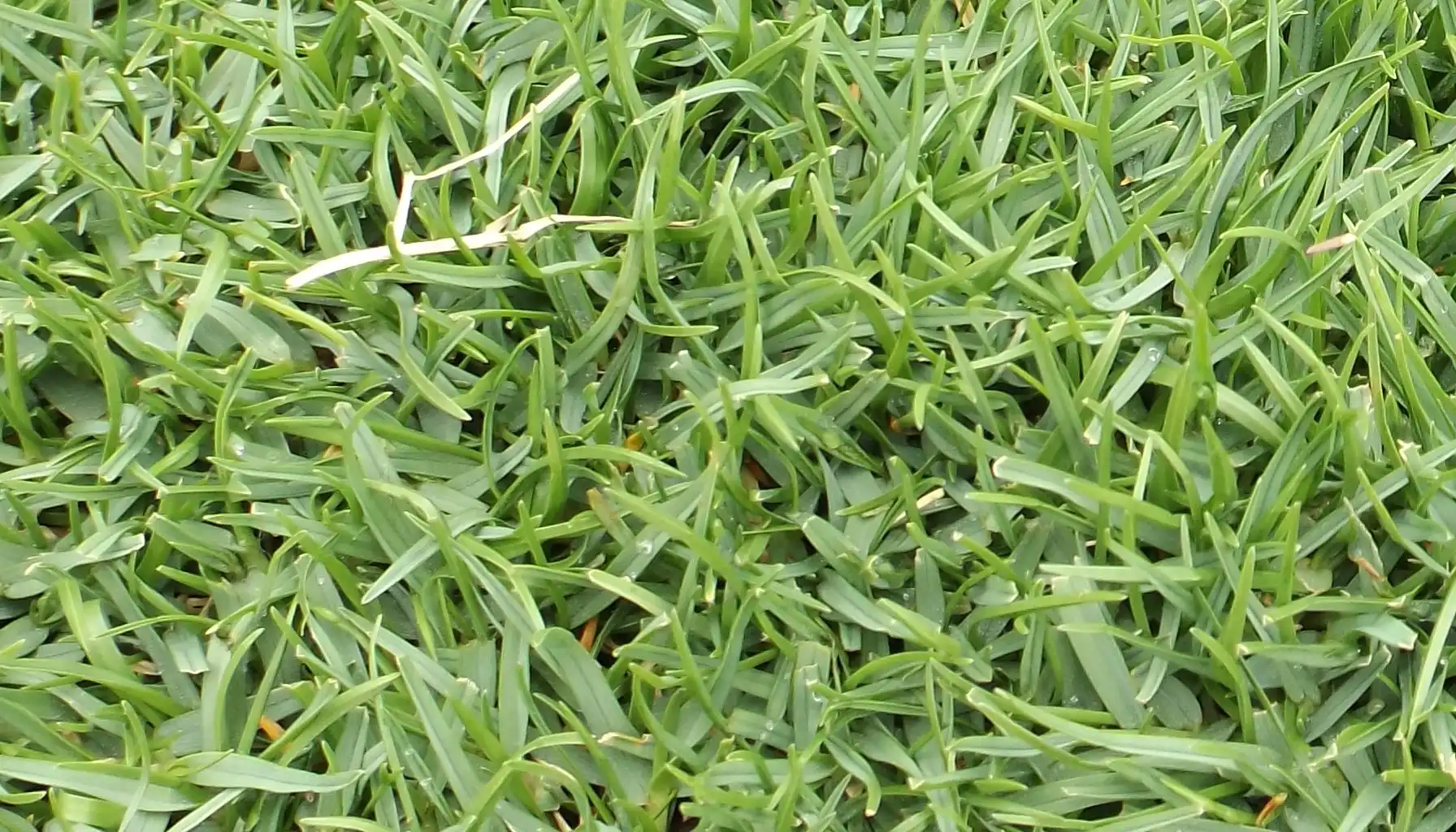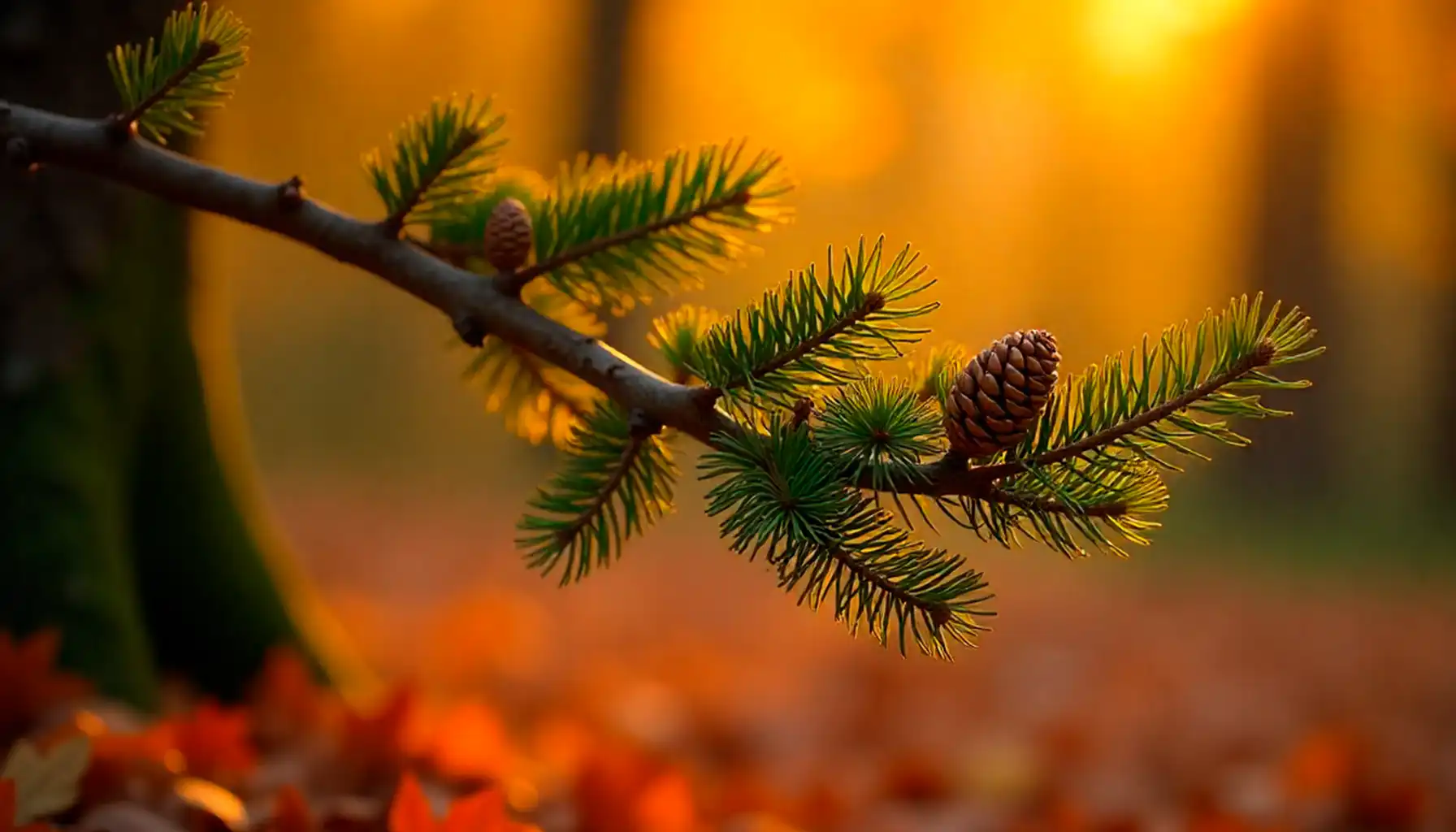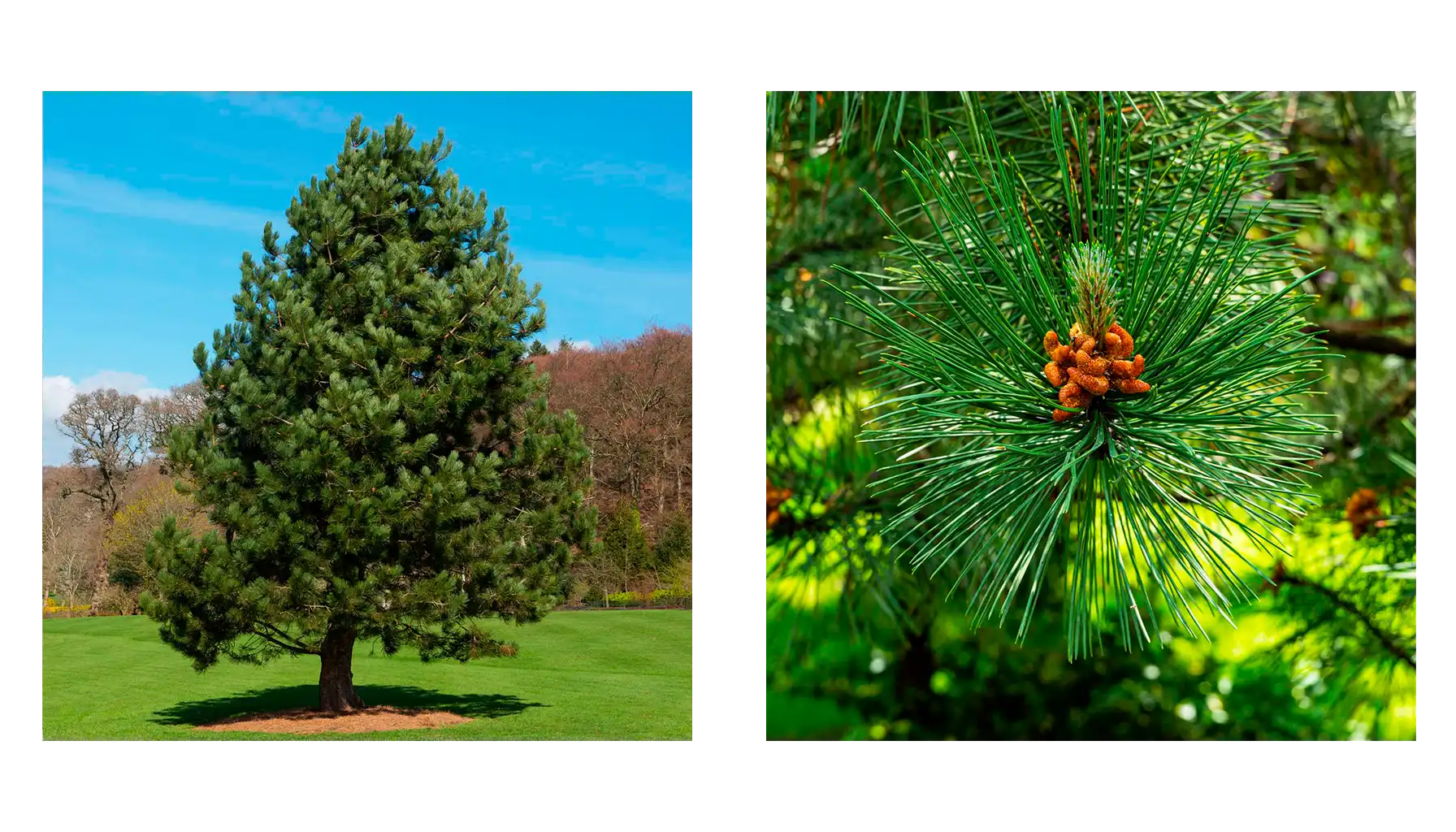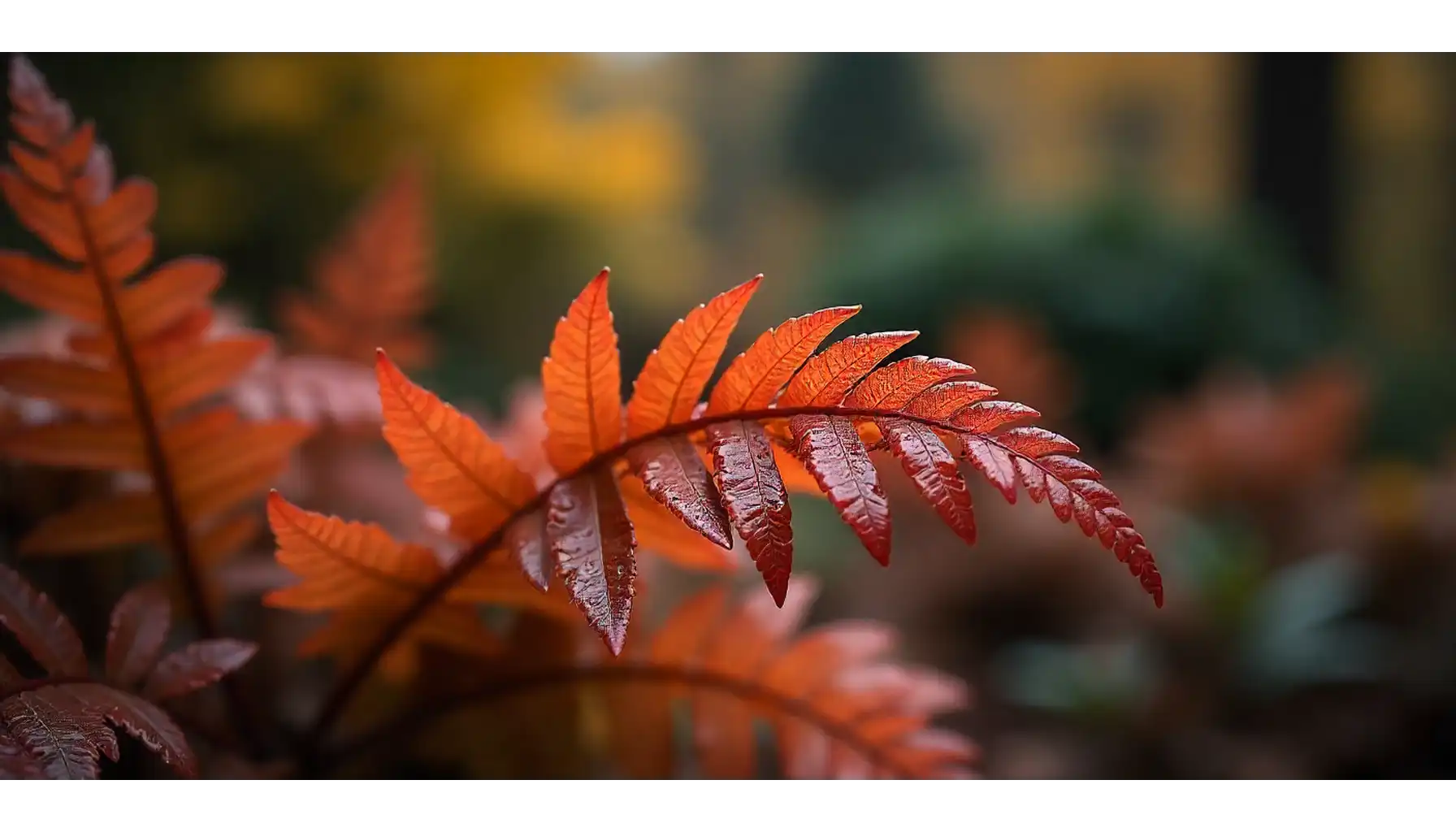The Austrian Pine (Pinus nigra), also known as the Austrian Black Pine, is a hardy evergreen tree. It is located in the Mediterranean, mainly in North Africa. The full grown Austrian Pine trees can reach a height of 480 to 720 inches, depending on the variety.
Austrian Pine Tree Guide
The Austrian Pine is appreciated for its dense dark green needles and adaptability for the environment. This tree is known for its Austrian Pine bark with rugged, fissured texture and large cones that give it a healthy appearance throughout the year. The Austrian Pine lifespan ranges from 50 to over 150 years under the right conditions. Austrian Pines for sale are often valued for their resilience, moderate growth rate, and versatility — from full-fledged landscape trees to Austrian Black Pine bonsai.
Austrian Pine Varieties
Popular varieties include the Austrian Oregon Green Pine, the Austrian Columnar Frank pine, the Austrian Arnold Sentinel pine and the Austrian Green Tower Pine. Struggling to tell Austrian Pine apart from another tree? Use the plant app for quick and easy recognition.
Variety | Height & Size | Features | Uses |
Oregon Austrian Pine | 30-40 ft. tall, 15-20 ft. wide | Stiff needles, dark green | Specimen tree, windbreak |
Frank’s Columnar Austrian Pine | 25–35 ft. tall, 8–10 ft. wide | Upright columnar habit | Narrow spaces, framing plant, rock gardens |
Arnold Sentinel Austrian Pine | 20–30 ft. tall, 6–8 ft. wide | Tight, formal structure | Urban landscapes, entryways |
Dwarf Austrian Pine | 3–6 ft. tall, 4–8 ft. wide | Compact, bushy form | Rock gardens, bonsai, containers |
Green Tower Austrian Pine | 25–30 ft. tall, 6–8 ft. wide | Dense foliage, elegant column | Gardens, hedges |
Check the Oregon Green Austrian Pine size and details before planting to ensure it fits your landscape plan.
Planting & Care Preparation
This plant is quite unpretentious, but it still requires attention and care. Before planting Pinus nigra Austrian Pine, consider the following recommendations.
It flourishes in deep, average, well-drained sandy or gravelly loams but is highly adaptable to a variety of soil types, except for overly wet conditions. Prefers slightly acidic to neutral soil. Avoid waterlogged areas to prevent Austrian Pine problems like root rot.
Austrian Pines prefer full sun exposure, ideally receiving at least 6 to 8 hours of direct sunlight per day. The plant may tolerate some light shade but thrive best in bright, sunny locations. In addition, it can withstand urban conditions and wind, making them ideal for screens and windbreaks.
Early spring or fall is the best time to plant, as this gives the roots plenty of time to establish. Spring planting allows trees to develop a strong root system before the summer heat arrives, while fall planting gives roots time to settle in before winter sets in. Avoid planting if severe frosts are expected.
Each season has its own advantages. Spring planting typically offers mild temperatures, adequate rainfall, and longer daylight hours, all of which promote healthy early growth. Fall planting takes advantage of warm soil and cooler air, allowing roots to begin developing before winter dormancy. Late summer planting can also be successful, as the soil is still warm enough to support good root establishment during the early weeks after planting.
The tree should be watered weekly during its first few years, then only during periods of drought once established. While young Frank Austrian Pines are fairly drought tolerant, they still need about an inch of water per week during extended dry spells to stay healthy and resist disease. The first one to three years are especially critical — avoid overwatering, as the soil should remain evenly moist but not soggy. During drought, water only when the soil begins to dry out, and increase watering during prolonged hot, dry weather. Remember that slow, deep watering is more effective than frequent, shallow watering.
When you look for Austrian Pine for sale, choose healthy nursery stock with a strong central leader and no visible damage.
Growing Tips Table
Soil pH | 6.5 to 7.5. |
Soil | Acidic, Alkaline, Drought, Loamy, Moist, Sandy, Well Drained |
Sun | Full sun |
Companion plants | Boxwood, Arizona Cypress, Mint Julep Juniper, Yew, and Red Clusterberry Cotoneaster, Japanese Blood Grass, Switch Grass, Angelonia |
Bloom time | Conifer; prized for foliage |
Zone | 4-8 |
Austrian Pine growth rate | Fast |
Problems & Solutions
Although Austrian Pine (Pinus nigra) is well known for its cold hardiness and adaptability, it can still face a number of common problems. By following a few simple steps, you can keep your tree healthy for many years.
One of the most frequent issues is needle blight (Dothistroma / brown spot). This disease is caused by fungal pathogens such as Dothistroma or Mycosphaerella. Symptoms include browning and premature needle drop, usually starting on the lower branches and progressing upward.
To prevent and control this problem you should prune and remove infected branches to improve air circulation, avoid overhead watering, apply a fungicide in spring and early summer if the infection is severe or recurring, dispose of fallen needles to reduce sources of reinfection.
Another common issue is insect infestation. Pine sawfly larvae, pine needle scale, and aphids can weaken trees by feeding on needles and sap, leading to defoliation and reduced growth. Inspect your trees regularly, remove insects and affected branches when noticed, and use appropriate insecticidal treatments if the infestation is severe.
Overwatering or planting in poorly drained soil can lead to root rot, which causes yellowing needles, dieback, and eventually tree decline. To avoid this, plant Austrian Pine Oregon Green or other varieties in well-drained soil and avoid excessive watering, especially during the establishment period.
Sudden temperature fluctuations or dry winter winds can cause bark cracking and needle browning. To minimize winter damage, water deeply in late fall before the ground freezes, mulch around the base to insulate the roots, and wrap young trunks with burlap or tree guards to prevent cracking.
Austrian Pine Tree Pros and Cons Table
Pros | Cons |
Like other similar garden plants, such as Thuja occidentalis and Amber Jubilee Ninebark, the plant hardy and adaptable to various climates | Susceptible to needle blight in humid areas |
Tolerates urban pollution and wind | Requires space for full Austrian Pine height growth |
Excellent for screens, windbreaks, and specimens | Susceptible to plant pests |
Long Austrian Pine lifespan (up to 150+ years) | Some varieties need pruning to maintain shape |
Attractive Austrian Pine bark and Austrian Pine cones | Moderate litter from needles and cones |
Available in many forms (columnar, dwarf, bonsai) | Certain pests may affect vigor if not monitored |
Related AI Plant Finder Posts




